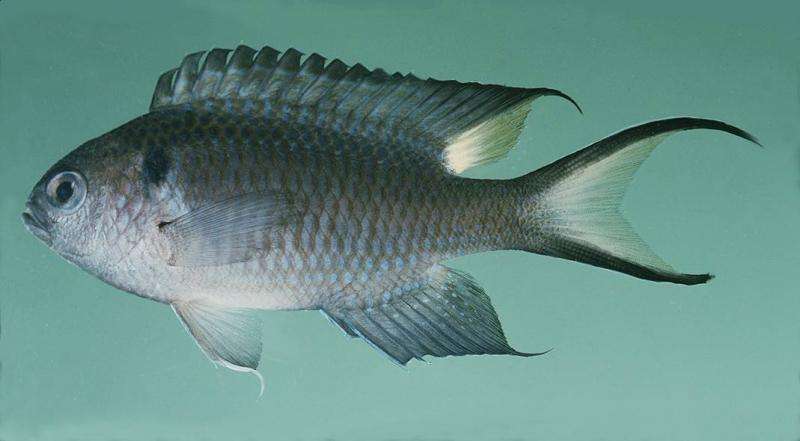Researcher studying potential invasive species in S. Gulf of Mexico

In fairytales, it's usually the damsel who is in distress. When it comes to the marine world, however, it seems it's the damsel that can cause some distress.
Damselfish are some of the most beautiful fishes in the ocean, and that's why they are so attractive to those who want a saltwater aquarium in their home or place of business. But there's a bit of a concern when it comes to one damselfish species - it is starting to pop up in a part of the ocean where it doesn't really belong.
"While you wouldn't immediately think of the regal damsel as a dangerous fish, the fact is they are now in places where they are not native and they're spreading, which makes them potentially an invasive species," said Matthew Johnston, Ph.D., a marine researcher at Nova Southeastern University's (NSU) Halmos College of Natural Sciences and Oceanography. "They may not be as impactful as say the lionfish has been, but these fish can also have a negative impact on their new habitats - it could throw the ecosystem out of natural balance."
Johnston is part of the group of researchers working out of NSU's Guy Harvey Research Institute. An author of many scientific studies, Johnston's research has provided fundamental insight into the spread and impact of invasive species, including the lionfish, in western Atlantic, Caribbean, and Gulf of Mexico marine waters.
The fish in question is the diminutive, non-native regal damselfish (Neopomacentrus cyanomos), which was recently discovered inhabiting coral reefs near Veracruz, Mexico. While it's not exactly a "fish out of water," given its native waters are the Red Sea and the Indo-Pacific, clearly this fish is a bit out of its normal neighborhood. The proliferation of these fish in non-native waters, and the fact that the invasion risk posed by this fish hadn't been fully assessed, Johnston set about creating a forecast to see just how impactful this damselfish could be to the area.
Johnston and Lad Akins of the Reef Environmental Education Foundation used computer simulation to forecast the spread of this tiny fish from where they were first found near Veracruz, Mexico. In their model, Johnston and Akins factored in oceanic water flow, the tolerances known to the damselfish in the ocean environment and their reproductive strategies - all of which have a direct impact on how fast they can spread. The good news is that they anticipate most of the Gulf of Mexico won't see this fish swimming in their waters anytime soon. The bad news is that reefs in the southern Gulf of Mexico are likely to see a lot more of them.
Johnston said there's a couple of ways a non-native species like this damselfish could get into new waters. One could simply be people getting rid of their fish tanks and literally dumping the fish into the ocean or canals that feed into the ocean. Another scenario could be that large ships that navigate the open oceans accidentally "sucked" these fish into their ballast tanks and then when arriving in other areas, discharged them into the new waters as they emptied their ballast tanks.
"The discovery of the regal damsel in Mexico highlights that we need to be very careful not to let our pets escape or release them into the wild," Johnston said. "This fish is just one of at least 40 marine aquarium fish that have been documented in the tropical Atlantic. You don't have to be an apex predator, have huge teeth or venomous spines to be a negative force on a reef - you just have to be where you're really not supposed to be and compete for the reef's limited resources."
The research paper was published in the journal Marine Biology. Please visit the USGS-NAS to learn more about the regal damselfish and other invasive species in our marine waters.
Journal information: Marine Biology
Provided by Nova Southeastern University





















